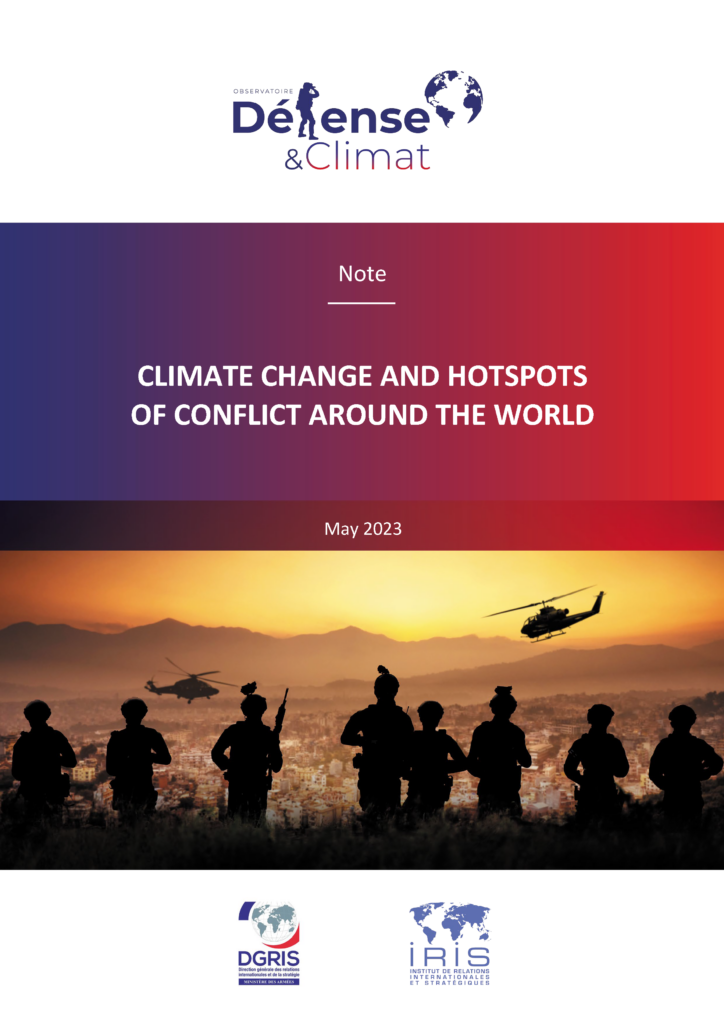Notes / Defence and Climate Observatory
14 June 2023
Climate change and hotspots of conflict around the world

Climate change was particularly destructive in 2022. Rising temperatures in particular have led to an increasing number of extreme weather events and environmental disasters, among which storms and hurricanes (in the Americas, South Africa, South and South-East Asia), floods (in West and South Africa, Asia, Australia and Europe), mega-fires (South America, United States, Europe), droughts (Europe, Brazil, China, Horn of Africa) and heatwaves (India, Pakistan, Australia). Although the intensity of these phenomena is subject to considerable geographical variability, every state experienced the risks that climate change poses to its economic stability, political sovereignty, and the safety of its population. By deteriorating the living environment of human societies, climate change exacerbates existing fragilities, particularly political and socio-economic tensions. As a result, people’s vulnerability to climate change contributes, more or less directly, to the displacement of populations, the threat to people’s livelihoods, states’ destabilisation and violent conflicts outbreak (IMCCS, 2021). These security impacts in turn make populations more vulnerable to climate change, creating a vicious circle (United Nations University, 2020)…



